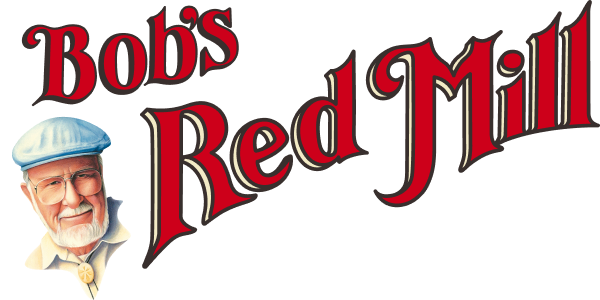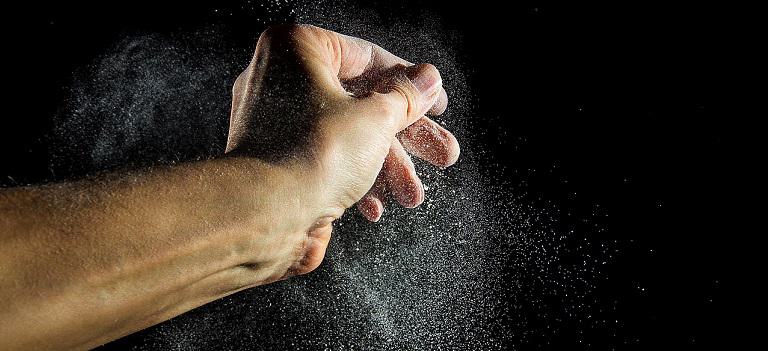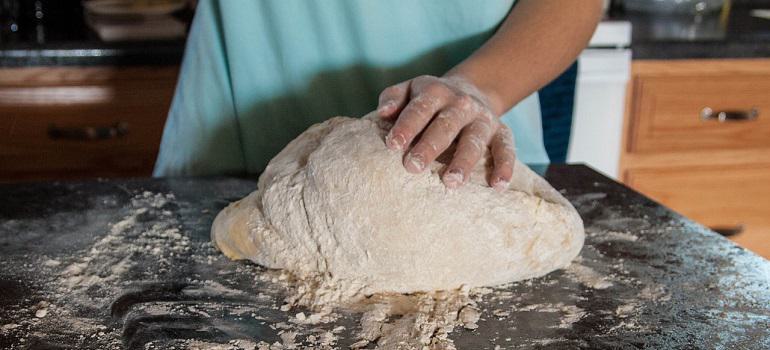


 Baking dish
A baking dish refers to a glass or ceramic dish used for things like casseroles, cakes and breads. If a recipe calls for a metal baking pan, feel free to use a baking dish instead (just lower the temperature by 25 degrees).
Baking pan
A baking pan refers to a metal dish (circle, square, rectangle, etc.) that is used in the oven. You can also find these dishes in the shapes of hearts, stars and bundt pans for an extra elegant dessert. To prevent sticking, make sure to grease them with butter or cooking spray prior to pouring in your batter.
Baking stone
Baking stones are typically heavy and thick, and used to replicate the baking style of bread ovens that are seen in commercial bakeries.
Measuring Spoons
Measuring spoons may be plastic, ceramic or stainless steel. Use them to measure ingredients like baking soda and baking powder.
Measuring Cup
Make sure to differentiate whether you are measuring dry or wet liquids (as there are different types of measuring cups for each). To easily spot the difference, dry measuring cups can be filled to the top and then leveled off with a straight edge like a knife. Liquid measuring cups tend to have a pour spout.
Baking dish
A baking dish refers to a glass or ceramic dish used for things like casseroles, cakes and breads. If a recipe calls for a metal baking pan, feel free to use a baking dish instead (just lower the temperature by 25 degrees).
Baking pan
A baking pan refers to a metal dish (circle, square, rectangle, etc.) that is used in the oven. You can also find these dishes in the shapes of hearts, stars and bundt pans for an extra elegant dessert. To prevent sticking, make sure to grease them with butter or cooking spray prior to pouring in your batter.
Baking stone
Baking stones are typically heavy and thick, and used to replicate the baking style of bread ovens that are seen in commercial bakeries.
Measuring Spoons
Measuring spoons may be plastic, ceramic or stainless steel. Use them to measure ingredients like baking soda and baking powder.
Measuring Cup
Make sure to differentiate whether you are measuring dry or wet liquids (as there are different types of measuring cups for each). To easily spot the difference, dry measuring cups can be filled to the top and then leveled off with a straight edge like a knife. Liquid measuring cups tend to have a pour spout.
 Cake flour
Cake flour is made with soft wheat to produce a fine and delicate flour. It tends to be good for desserts like angel food cakes.
All-Purpose Flour
All-purpose flour is one of the most common dry ingredients, which refers to a regular white flour that is generally a combination of both soft and hard varieties of wheat which is commonly used for bread dough. It works for all sorts of baked products, including breads, cookies and cakes. You can find it both bleached or unbleached.
Gluten Flour
Gluten flour is often referred to as wheat gluten. Its made by removing starch from hard wheat flour.
Whole Wheat Flour
Whole wheat flour is ground from the wheat berry and contains both the wheat bran and wheat germ. It tends to be coarser in texture than white flour.
Almond Flour
Almond flour is typically made from ground sweet almonds. It can be used for everything that goes on a baking sheet, such as cookies and breads to macaroons.
Gluten Free Flour
Gluten Free Flour can be used in brownies, cookies, cakes and more. Bobs Red Mill 1-to-1 Gluten Free Flour can be used as a direct replacement for all purpose baking flour.
Coconut Flour
Coconut Flour is ground from dried and defatted coconut meat. Bobs Red Mill high fiber Coconut Flour can be used to replace up to 20% of the flour called for in a recipe.
Tapioca Flour
Tapioca Flour is a grain free flour made from cassava root. It is both starchy and slightly sweet and a staple in gluten free baking. It can also be used to thicken soups, sauces and pie fillings.
Hazelnut Flour
Hazelnut Flour is a Paleo-friendly, grain free flour used for making baked goods (it can also be used to bread chicken or fish and is tasty when added to smoothies).
Cake flour
Cake flour is made with soft wheat to produce a fine and delicate flour. It tends to be good for desserts like angel food cakes.
All-Purpose Flour
All-purpose flour is one of the most common dry ingredients, which refers to a regular white flour that is generally a combination of both soft and hard varieties of wheat which is commonly used for bread dough. It works for all sorts of baked products, including breads, cookies and cakes. You can find it both bleached or unbleached.
Gluten Flour
Gluten flour is often referred to as wheat gluten. Its made by removing starch from hard wheat flour.
Whole Wheat Flour
Whole wheat flour is ground from the wheat berry and contains both the wheat bran and wheat germ. It tends to be coarser in texture than white flour.
Almond Flour
Almond flour is typically made from ground sweet almonds. It can be used for everything that goes on a baking sheet, such as cookies and breads to macaroons.
Gluten Free Flour
Gluten Free Flour can be used in brownies, cookies, cakes and more. Bobs Red Mill 1-to-1 Gluten Free Flour can be used as a direct replacement for all purpose baking flour.
Coconut Flour
Coconut Flour is ground from dried and defatted coconut meat. Bobs Red Mill high fiber Coconut Flour can be used to replace up to 20% of the flour called for in a recipe.
Tapioca Flour
Tapioca Flour is a grain free flour made from cassava root. It is both starchy and slightly sweet and a staple in gluten free baking. It can also be used to thicken soups, sauces and pie fillings.
Hazelnut Flour
Hazelnut Flour is a Paleo-friendly, grain free flour used for making baked goods (it can also be used to bread chicken or fish and is tasty when added to smoothies).
 Beat
To beat, combine a mixture by whipping it (this can be done with a fork, electric mixer or spoon).
Mash
To mash, press the mixture with a fork or potato masher to make it smooth.
Plump
To plump, soak the ingredient in liquid.
Grease
To grease, coat your baking pan in cooking spray, butter or oil.
Crimp
To crimp, pinch your pastry dough together using your fingers. Youll typically find this instruction in pie recipes.
Drizzle
To drizzle, pour icing (or something similar in liquid form) in a steady stream over your desired ingredient. Youll often find this in cake recipes.
Sift
To sift, remove the lumps from ingredients like powdered (or confectioners) sugar or flour. You can do so using a sifter or sieve.
Simmer
To simmer, cook your ingredients below boiling point on a low setting until bubbles begin to form.
Marble
To marble, swirl your ingredients together. Marble cakes, for examples, mix light and dark batters.
Ice
To ice, frost your baked good. This is often seen in cookies when a thin layer of frosting is desired.
Puree
To puree, turn your food into a paste. You can do so with a food processor or blender.
Zest
To zest, use a grater to gather the outer portion of citrus fruit like lemon, orange or lime. This portion has oils and adds a beautiful aroma and flavor to baked goods.
Blend
To blend, combine two or more ingredients until the texture becomes smooth.
Knead
To knead, work your dough with the heels of your hands. You will press and fold until your dough is elastic. This method is typically used while making breads.
Fold
To fold, scoop in a downward motion and mix your ingredients gently. You can use a rubber spatula to do so.
Garnish
To garnish, use small ingredients (like edible flowers or herbs) to add both decoration and flavor to the end result.
Pipe
To pipe, use a piping bag or a plastic bag with a hole to add frosting to baked goods like cupcakes and cookies.
Dust
To dust, sprinkle your baked item with an ingredient like edible glitter or powdered sugar for a hint of magic.
Boil
To boil, cook the ingredient at a high temperature so that it causes steady bubbles. Rolling boil refers to a fast boil--the surface of the liquid will be entirely covered with bubbles.
Caramelize
To caramelize, heat and stir your sugar. Doing so will cause it to melt and brown.
Beat
To beat, combine a mixture by whipping it (this can be done with a fork, electric mixer or spoon).
Mash
To mash, press the mixture with a fork or potato masher to make it smooth.
Plump
To plump, soak the ingredient in liquid.
Grease
To grease, coat your baking pan in cooking spray, butter or oil.
Crimp
To crimp, pinch your pastry dough together using your fingers. Youll typically find this instruction in pie recipes.
Drizzle
To drizzle, pour icing (or something similar in liquid form) in a steady stream over your desired ingredient. Youll often find this in cake recipes.
Sift
To sift, remove the lumps from ingredients like powdered (or confectioners) sugar or flour. You can do so using a sifter or sieve.
Simmer
To simmer, cook your ingredients below boiling point on a low setting until bubbles begin to form.
Marble
To marble, swirl your ingredients together. Marble cakes, for examples, mix light and dark batters.
Ice
To ice, frost your baked good. This is often seen in cookies when a thin layer of frosting is desired.
Puree
To puree, turn your food into a paste. You can do so with a food processor or blender.
Zest
To zest, use a grater to gather the outer portion of citrus fruit like lemon, orange or lime. This portion has oils and adds a beautiful aroma and flavor to baked goods.
Blend
To blend, combine two or more ingredients until the texture becomes smooth.
Knead
To knead, work your dough with the heels of your hands. You will press and fold until your dough is elastic. This method is typically used while making breads.
Fold
To fold, scoop in a downward motion and mix your ingredients gently. You can use a rubber spatula to do so.
Garnish
To garnish, use small ingredients (like edible flowers or herbs) to add both decoration and flavor to the end result.
Pipe
To pipe, use a piping bag or a plastic bag with a hole to add frosting to baked goods like cupcakes and cookies.
Dust
To dust, sprinkle your baked item with an ingredient like edible glitter or powdered sugar for a hint of magic.
Boil
To boil, cook the ingredient at a high temperature so that it causes steady bubbles. Rolling boil refers to a fast boil--the surface of the liquid will be entirely covered with bubbles.
Caramelize
To caramelize, heat and stir your sugar. Doing so will cause it to melt and brown.

